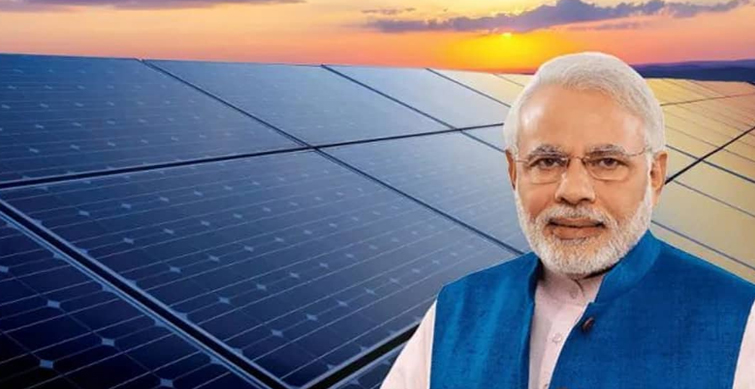India has emerged as a global leader in the renewable energy sector in the last few years. Solar energy production is among the few sectors where India is achieving targets in advance. The country had set the target of 20 GW renewable energy capacity by 2022 which was achieved in four years in advance, in 2018 and the new target set by PM Modi is of 100 GW by 2022 which India is very likely to achieve given the exponential growth in capacity in the last few years.
Also, the price for solar power crashed to a new low of 2 rupees per unit which is way below the power produced through thermal plants. India has one of the lowest electricity generation costs in the world, thanks to the abundance of coal, solar power, and wind power. As per a report by the England-based consultancy firm Wood Mckenzie, power generation from fossil fuel costs only 3.05 rupees per unit in India in comparison to 3.35 rupees per unit in China, and 3.49 rupees per unit in Australia.
Also, power generation from solar power costs 2 rupees per unit in India when compared to 3.62 rupees per unit in Australia and 4.2 rupees per unit in China. Wind power generation cost in India, too, is among the cheapest in the world at 3.36 rupees per unit.
India’s total power production capacity of 373 GW- 36 per cent of which comes from renewables as of 2019- is way above its consumption capacity, and given the fact the production cost in India is low compared to its neighbouring countries, the country has a golden opportunity to become an energy export powerhouse. Many neighbouring countries including Bangladesh, Nepal, and Myanmar already purchase a good amount of electricity from India and with the falling prices, the export to these countries are set to increase.
As per a report presented by the Power Minister RK Singh in the Parliament, India exported 8.01 billion units of electricity to neighbouring countries between April 2019 and January 2020. In June this year, P R Mehta, Chairman, National Solar Energy Federation of India (NSEFI), said that India should focus on the export of renewable energy. “We have already formed as NSEFI members a Renewable Energy Export Promotion Council of India on the line of Gems and Jewellery Export Promotion Council (GJEPC) to encourage export of renewable energy from India,” Mehta said during a virtual round table discussion on “Solar Energy Storage and Intercontinental Grids”.
The establishment of Intercontinental grids means that India has the potential to export solar energy to any country on the Eurasian continent; given the fact that in India solar energy generation costs only 2 rupees per unit. As this is one of the lowest prices globally, India could easily supply solar energy from Europe to East Asia.
Also, the recent success in rooftop solar energy will help Indian companies leverage the markets due to the country receiving high exposure to sunlight throughout the year. “The success stories will be emerging through rooftop solar generation, local storage and utilisation and local generation from solar and renewable energy sources in rural areas and villages of the country,” said Anil Shrivastava, NITI Aayog’s Principal Consultant for mobility.
Renewable energy, primarily solar energy could make India an export powerhouse. Like the Middle Eastern countries became export powerhouses with abundance in oil, India too has the potential to become the export powerhouse of renewable energy with the advancement in solar technology. As fossil fuels (coal, oil, and gas) today are being replaced with sources of renewable energy across the globe, India has been given its long-awaited golden opportunity! The loss for the Middle East would surely be India’s gain in the near future.
